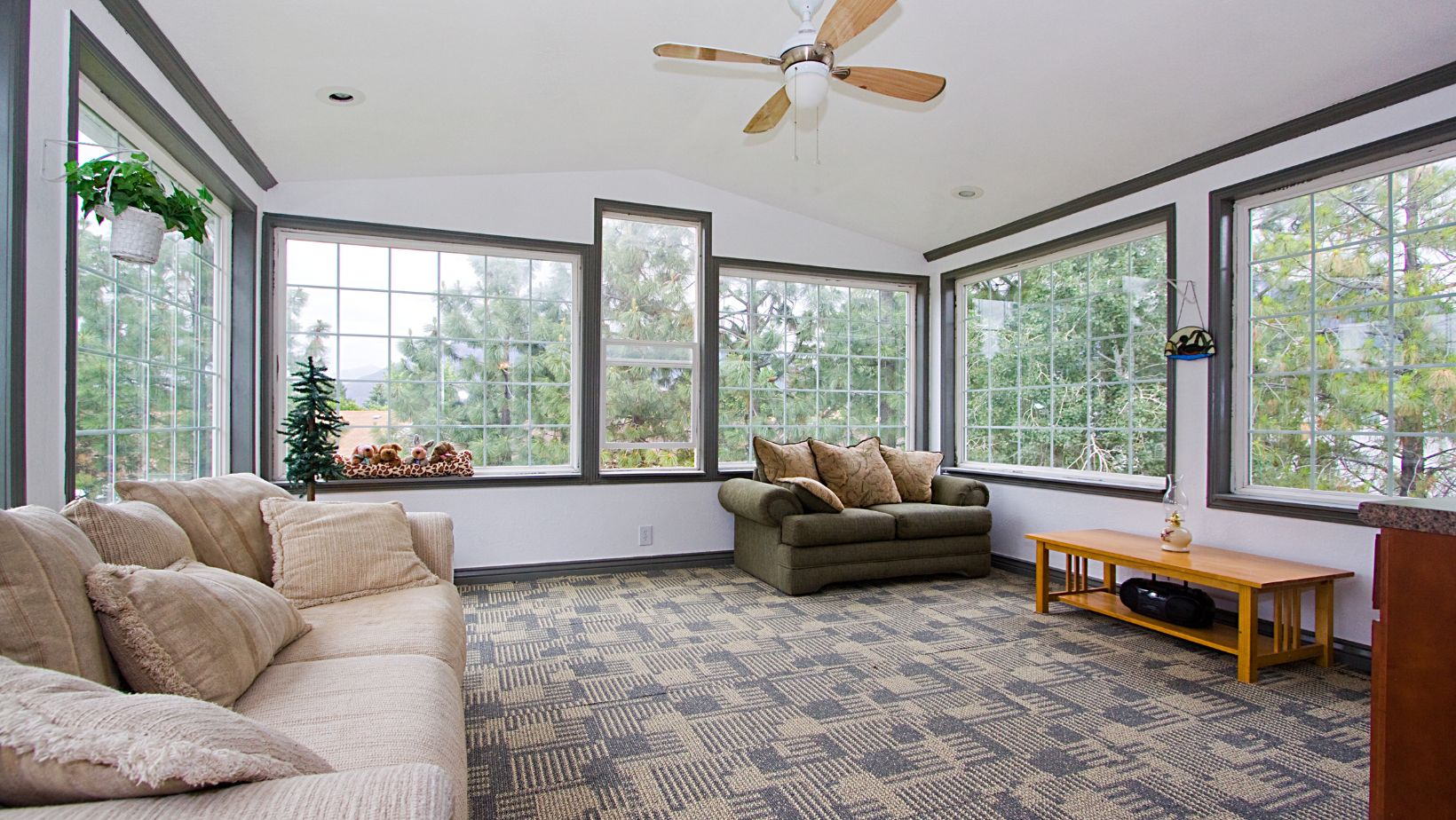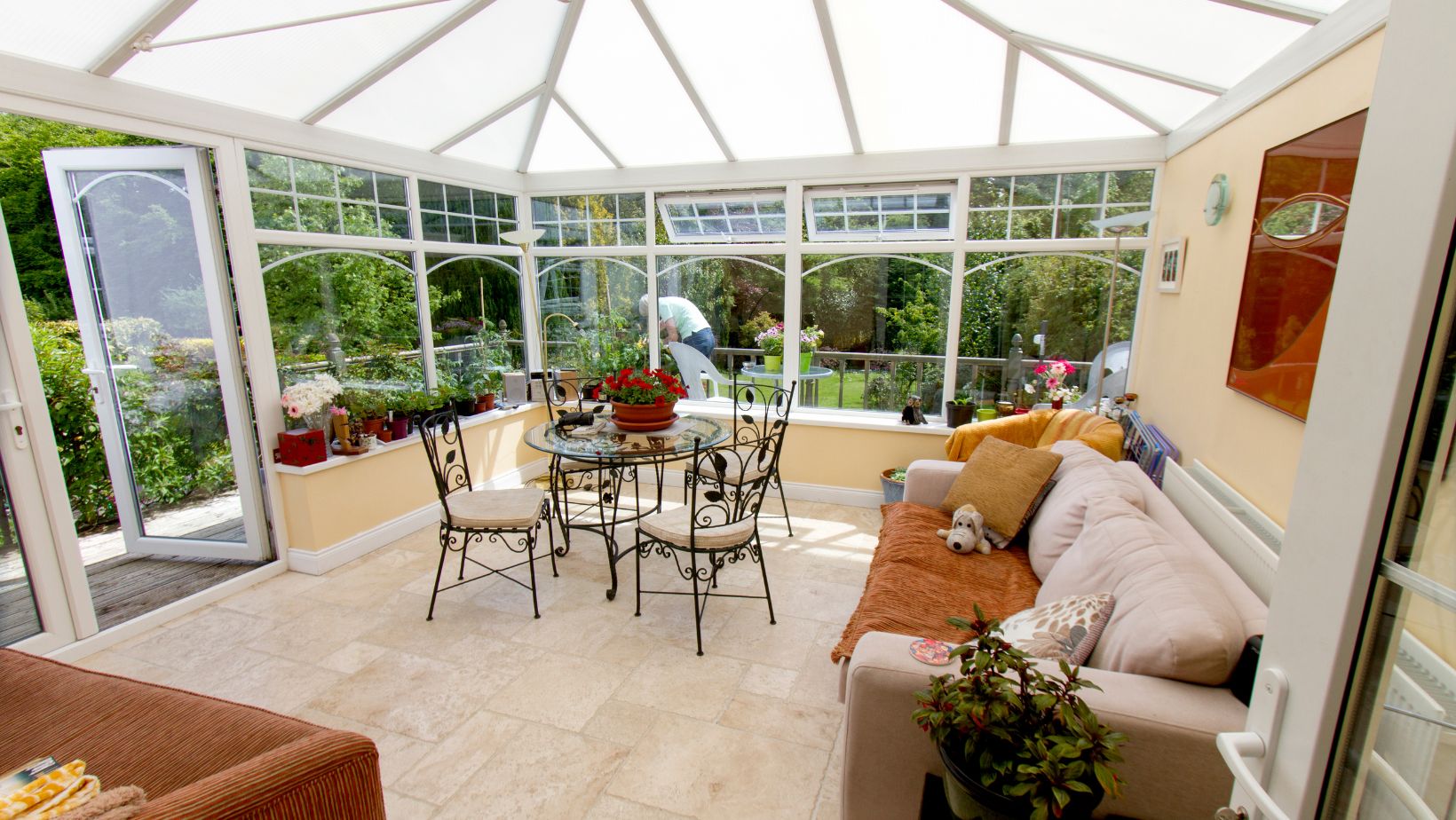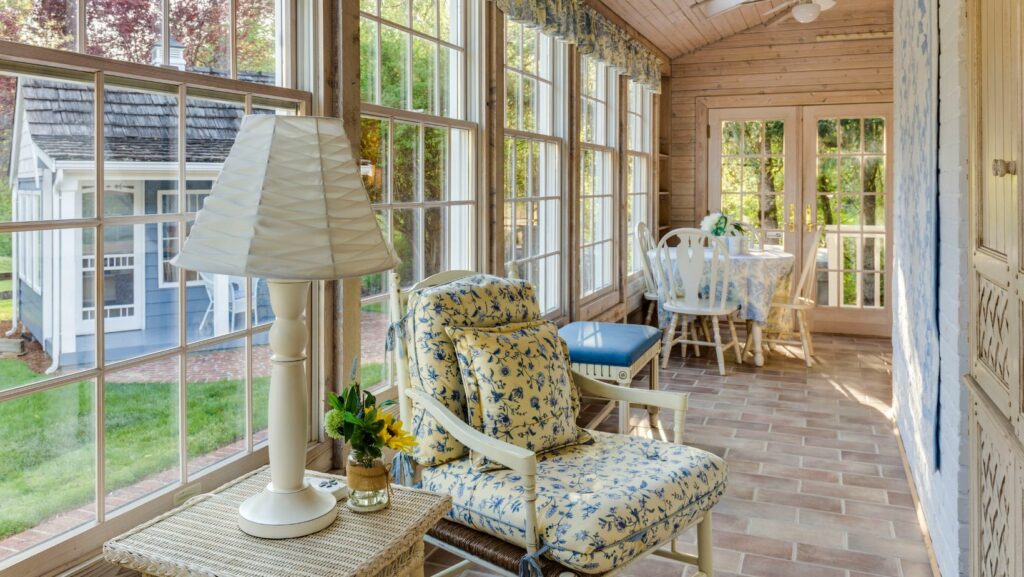In the realm of home enhancement, a duality emerges between sunrooms and traditional additions. The choice between these two encompasses a delicate balance of practicality and aesthetics, where financial constraints, envisioned utility, and the allure of design converge. For homeowners, this decision becomes a journey of self-expression, shaping the physical space and the ambiance of daily living.
Understanding the nuances between sunrooms and traditional additions becomes imperative. Continue reading this article to learn about factors that come into play when considering an extension of your home with either a sunroom or a traditional addition.
Understanding Sunrooms
A sunroom is like a glass haven connected to your home, crafted to soak in sunlight and nature’s vistas. It’s a serene spot where indoor and outdoor living blends seamlessly. Sunrooms are prized for allowing abundant natural light into your indoor living space, fostering a deep connection with the outdoors.
They serve multiple functions, from a cozy lounge to a verdant greenhouse or a charming dining area. With floor-to-ceiling windows, skylights, and sliding doors as standard features, sunrooms offer a range of design options, spanning from classic to contemporary, empowering you to customize the space to suit your style and practical requirements.
Exploring Traditional Additions
Traditional additions are extra spaces built onto existing homes, expanding living areas and enhancing functionality. They offer a seamless integration with the original structure, maintaining architectural harmony.

Advantages include creating more living space for families to grow and entertain while potentially boosting property value. Typical traditional additions encompass bedrooms for growing families, additional bathrooms to alleviate household congestion, and extended living rooms for enhanced comfort and relaxation.
Factors to Consider
Making the decision of choosing a sunroom or an addition requires the consideration of these factors:
- Budget considerations are vital, as sunrooms typically cost less upfront but may require more maintenance.
- Space requirements involve assessing available space and adhering to zoning regulations, ensuring compliance with local building codes.
- Functional needs dictate the purpose of the added space, whether it’s for relaxation, entertainment, or practical use.
- Aesthetic preferences are also crucial, as homeowners must consider design styles and ensure architectural cohesion with the existing home, maintaining its overall visual appeal and harmony.
Comparing the Pros and Cons
Comparing sunrooms and traditional additions reveals distinct pros and cons. Sunrooms offer affordability and rapid installation, which is ideal for quick enhancements. However, they may lack traditional additions’ versatility and structural integration, limiting functionality.
Traditional additions provide versatile space for various purposes and can significantly increase property value. Yet, they often involve higher costs and longer construction, requiring careful planning. Understanding these differences helps homeowners weigh the trade-offs and choose the option best suited to their needs.
Making Your Decision
Choosing between a sunroom and a traditional addition requires careful consideration of critical factors. It’s crucial to weigh aspects like budget, space requirements, and intended use. Personal preferences regarding design styles and architectural coherence also play a significant role.

Aligning the decision with budget constraints ensures financial feasibility while meeting functional needs, which guarantees practical utility. By prioritizing these considerations, you can make an informed choice that aligns with your lifestyle and long-term goals.
Endnote
In conclusion, homeowners should consider budget, space, functionality, and aesthetics when choosing between sunrooms and traditional additions. Making an informed decision aligned with personal needs and preferences is essential. Both options offer unique value, enhancing the home’s living spaces and lifestyle comforts. Whether opting for the affordability and quick installation of sunrooms or the versatility and increased property value of traditional additions, your decision should ultimately reflect individual priorities and preferences.


More Stories
A Beginner’s Guide to Growing Houseplants
Comprehensive Dental Care for a Healthy, Confident Smile
The Hidden Benefits of Upgrading Your Windows: Beyond Energy Efficiency